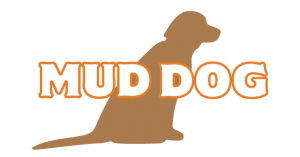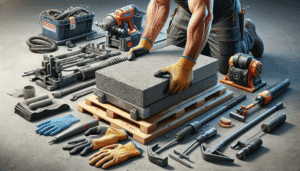If your Patio, Garage Floor, or front Steps are doing that uneven, lopsided dance, you’re not alone — and honestly, it’s more common than people think here in Ogden. Concrete settling can sneak up on you: one day it’s fine, the next your lawn chair wobbles and the door sticks. This article is for homeowners who want practical, down-to-earth tips on Concrete Leveling — what to watch for, what you can try safely, and when it’s time to call pros like Mud Dog Jacking. You know what? A little attention now can save a lot of headache later.
Why your concrete sinks (and why that’s a big deal)
So why does concrete drop? Short answer: soil moves. Long answer: a mix of water, freeze-thaw cycles, poor compaction, and old fill materials. In Ogden, the freeze-thaw cycle and seasonal irrigation can cause the soil under slabs to lose support, and before you know it, you’ve got a trip hazard.
It may look cosmetic, but uneven concrete affects drainage, causes tripping risks, and can create gaps that invite further erosion. Leave it and the problem often grows faster than you expect — but don’t panic; most cases are fixable without tearing everything out.
Quick checks you can do yourself (no heavy tools required)
Before you call anyone, walk the site. Look, listen, and feel — yes, feel. A wobble or hollow sound under a slab often means voids beneath it.
Here are some easy checks:
- Visual check: Look for cracks, leaning posts, and gaps between slabs. These are clues.
- Water test: After a rain or using a hose, watch where water pools or drains. Poor drainage equals more settling.
- Straightedge test: Lay a 6–8 foot level or board across the slab to find low spots.
If the slope is small and the slab is mostly intact, you might be dealing with a candidate for leveling rather than replacement.
Methods explained — what mudjacking and foam do (and when they make sense)
Here’s the thing: not all leveling methods are created equal. Two common approaches are mudjacking and releveling with polyurethane foam (brands you might’ve heard: PolyLevel). Both lift the slab, but they work differently.
| Method | When it fits | Key pros |
|---|---|---|
| Mudjacking (cement slurry) | Older homes, large voids, thick slabs | Cost-effective, durable, uses familiar materials |
| Polyurethane foam | Smaller access, quick cure, sensitive landscaping | Lightweight, minimal excavation, fast return to use |
Contradiction alert: mudjacking uses a heavier slurry, so some folks say it’s stronger — and sometimes it is. Yet foam often outperforms mudjacking where soil is soft because it fills voids and stabilizes rather than just lifting. We pick the method based on soil tests, slab condition, and your priorities (cost, speed, long-term stability).
Timing matters — when to fix now and when you can wait
Not everything needs immediate surgery. Tiny hairline cracks? Watch them. A slab that’s dramatically uneven or creating a water pool? Fix it. Here’s a simple rule: if it affects safety, drainage, or doors/windows, act now.
Seasonal timing matters too. Spring thaw can make soils unstable; late summer when the ground is drier is often better for permanent repairs. But sometimes waiting makes things worse — so strike a balance. If you delay because of weather, at least protect the area from further water runoff.
Common homeowner mistakes (and how to avoid them)
Homeowners often try to patch the visible problem and call it a day. Patching can mask an issue but won’t fix lost subgrade support. Other mistakes include DIY heavy lifting with no plan, or choosing a contractor purely on price.
Smart moves instead:
- Get a proper assessment: A probe or soil test reveals voids or soft subgrade. You don’t want surprises.
- Ask about warranties: Look for material and workmanship guarantees — they matter.
- Consider drainage fixes: Solving the symptom without addressing runoff is like replacing a roof but leaving a leak in the attic.
What professionals actually do (so you know what to expect)
When a pro shows up — like a crew from Mud Dog Jacking — they’ll inspect, probe, and recommend. If mudjacking is chosen, small holes are drilled and a grout slurry is pumped to lift the slab. If foam is preferred, a two-part polyurethane is injected through tiny holes; it expands, fills voids, and lifts.
Both methods generally allow fast use of the surface — often the same day with foam, a bit longer with mudjacking. Equipment ranges from pumps and hoses to compaction tools and levels. Brands and tools you might hear about include PolyLevel for foam systems and commercial grout pumps for mudjacking.
How to pick the right contractor — a few red flags and green lights
Finding someone who knows local soil and weather patterns is a big plus. Green lights include written estimates, clear explanations, references, and a warranty. Red flags? No paperwork, vague timelines, or pressure to choose the cheapest option.
Ask questions: How will you handle drainage? What warranty do you offer? Which method do you recommend and why? A good contractor will explain technical terms without making you feel dumb — and will show examples.
Costs and value — what to expect in Ogden
Costs vary by method, slab size, and soil condition. Foam is often faster but pricier per square foot. Mudjacking is usually cheaper up front, but if the subgrade is poor, supplemental stabilization may be needed.
Think about value: paying a bit more for a long-lasting repair and proper drainage can mean fewer headaches later. It’s a little like choosing between a quick fix and a fix that keeps working — sometimes you want the latter.
Seasonal tips and local quirks (because Ogden isn’t the same as Phoenix)
In Ogden, freeze-thaw cycles and mountain runoff are factors. Spring melt can shift soils quickly, and irrigation systems can over-saturate fill areas. If you notice sagging after winter, check gutters, downspouts, and sprinkler heads — they often point straight at the problem.
Also, consider timing repairs for late summer or early fall when the ground is stable. Landscaping choices matter too: deep-rooted shrubs help, but large trees too close to slabs can cause issues down the road.
When replacement makes sense (yes, sometimes tearing out is right)
Not every slab is worth saving. If the concrete is crumbling, extensively cracked, or the slope is severe and tied to structural issues, replacement can be the smarter route. It costs more up front — sure — but it can be the long-term choice that prevents repeated service calls.
Replacement also gives you a chance to upgrade: better reinforcement (rebar), improved subgrade compaction, or a new surface that matches current styles and codes.
How Mud Dog Jacking approaches your job differently
We’re local — we know Ogden soils and seasonal quirks. We’ll give you a clear assessment, recommend mudjacking or polyurethane where it fits, and explain the trade-offs plainly. No buzzwords, no hard sell. Just a plan: assess, lift, stabilize, and fix drainage where needed.
We mix the technical with the practical. Expect honest timelines, clear pricing, and a warranty that matters. We’ve lifted driveways, patios, garage floors, and porches — and yes, we’ve fixed that wobbling front step that makes you wince every time you come home.
Ready to get your concrete level again? Here’s how to start
If you’re ready to stop tripping and start enjoying your space, give us a call. We’ll assess the site, explain options, and give you a quote with no nonsense. No pressure — just real answers and a plan that fits your budget and your yard.
Call us: 801-644-9122
Whether it’s a small patio or a large Driveway, don’t let settling steal another season from your yard. Reach out — we’ll walk the job with you, show you the problem spots, and explain the simplest way to fix them. Sometimes the solution is quick and tidy; sometimes it’s more involved. Either way, you’ll know what to expect.




